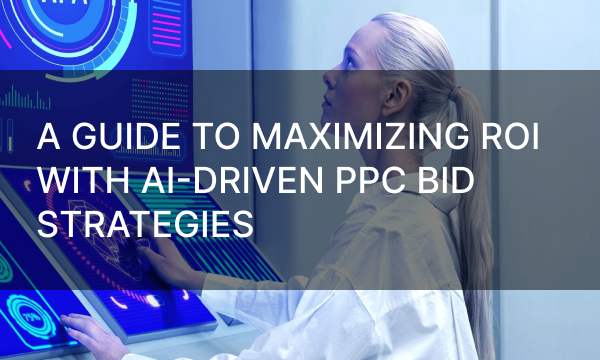Introduction to the PPC ad targeting options
PPC advertising has become a powerful strategy to connect with potential customers through targeted ads that align with their interests and needs. However, the success of PPC campaigns largely relies on precise targeting. With many options from demographic targeting to advanced behavioral segmentation, the possibilities for customizing PPC campaigns are both extensive and complex. Platforms such as Google Ads and Microsoft Ads enable delivery of targeted messages to users based on their search habits, the content they engage with, and their online behavior.
This guide explores multiple ad targeting options available for search, display, and remarketing campaigns, showing how to use them to reach prospects. We’ll delve into different targeting methods, providing you with the insights to achieve maximum ROI. Whether you are an advanced marketer seeking to refine your approach or a beginner eager to explore PPC advertising, we’ll equip you with crucial knowledge for creating campaigns that drive traffic and convert impressions into interactions.
Search Targeting
 Photo by Immo Wegmann on Unsplash
Photo by Immo Wegmann on Unsplash
Search targeting focuses on understanding and leveraging different user intents to increase the visibility and relevance of online content. It goes beyond mere keyword matching by examining a range of data points such as user behavior, demographics and search context, resulting in a more complex targeting system. Advanced techniques, such as semantic search and machine learning algorithms, allow ad campaigns to be dynamically adjusted to meet changing audience needs. Voice search optimization has also become important as more consumers use voice-activated devices.
When consumers enter queries into search engines, they are searching for specific information, solutions, or products that meet their needs, highlighting the importance of optimization at every point. As customers move through their purchasing journeys, they encounter multiple touchpoints that shape their decision-making.
These touchpoints can include:
- search engines
- social media platforms
- brand websites
- email marketing
- offline interactions
Dynamic Search Ads
Dynamic Search Ads expand the reach of your existing search campaigns as they help you find relevant queries that are not currently targeted in your account. Instead of providing platforms with a list of keywords, you simply give them your website and search engines will match user queries to your site’s content. You can let the platform scan all pages, select certain ones, or provide specific lists of pages for it to examine. However, the ad service you receive is influenced by the content on your website.
There are two main types of Dynamic Search Ads: targeting all webpages and targeting specific categories. The first type allows Google to browse the entire website, creating ads based on relevant search queries that match all the resources on the site. This approach is useful for websites that offer a diverse set of products or services, as it provides a wide range of offerings while minimizing the time spent manually creating ads.
The second type focuses on targeting specific product categories or pages, enabling you to refine your ad targeting by choosing specific sections of your website. This strategy results in more accurate and relevant ad placements. This is especially beneficial for better control of your ad messages, ensuring that they closely align with your ad objectives.
Dynamic Search Ads can be effectively combined with traditional search campaigns to enhance traffic and expand reach, optimizing overall PPC strategies. Integrating automation with targeted ads allows you to build strong connections with prospects who are looking for relevant products or services. The flexibility of Dynamic Search Ads allows you to customize your approach to match your specific needs and diverse offerings, ensuring effective audience engagement and increased conversions.
Display Targeting
 Photo by Marques Thomas on Unsplash
Photo by Marques Thomas on Unsplash
Google Display Network campaigns are divided into two main categories: content and audience. By choosing content targeting, you tell Google that you want to show up on sites that have content that is relevant to you. By choosing audience targeting, you tell Google that you want to show up to people whose behavior you consider important, regardless of websites’ content.
Contextual Targeting
Contextual targeting focuses on what’s happening around you and the topics that matter to you. By matching ads to users’ immediate interests, their privacy and preservation of personal information become a priority. The technology behind contextual targeting can recognize subtle topics and the sentiments conveyed in content, building strong connections with prospects, leading to improved engagement and a better user experience.
Contextual targeting enhances brand safety by saving ads from running next to inappropriate or harmful content, thereby maintaining the brand’s integrity and reputation. It is expected to grow in importance, offering a more ethical and effective option compared to data-driven ad methods. This shift is also likely to foster relationships between brands and consumers.
There are several significant types of contextual targeting:
- Placement Targeting is the most precise method available on the Google Display Network. You submit a list of specific websites where you want your ads to appear. For an ad to be displayed, the chosen website must be a part of Google’s ad network, known as AdSense.
- Keyword Targeting operates differently than search. Keywords don’t use match types and work like broad matches in Search. You submit a list of keywords to Google, which searches for content that somewhat matches those keywords in order to display your ads.
- Topics cover multiple categories with several subcategories to define the specific type of content to be associated with the ads. You can select topics from a list provided by Google, which categorizes websites and placements based on thematic relevance.
Audience Targeting
Audience targeting enables you to reach the right consumers by delivering personalized messages that match their unique needs and preferences. Using data analytics, demographic insights, psychographic information, you can divide your audience into specific segments to create customized content that directly addresses their interests, increasing engagement and conversion. AI and machine learning significantly improve audience targeting by predicting consumer behavior and identifying new trends.
There are several significant types of audience targeting:
- In-Market Audiences consist of users whom Google identifies as actively researching or “in the market” for specific products or services. You can browse through the lists of In-Market Audiences, many of which share similar themes. This helps you refine targeting to users who have performed searches and thus demonstrated research behavior.
- Life Events enable you to reach users showing signs of significant life changes. This feature has been expanded and the list of events has become longer since its introduction several years ago.
- Detailed Demographics enable you to target users according to information that Google assumes or provides, such as parental status, marital status, education level, and homeownership status.
- Custom Intent Audiences allow you to create audiences based on keywords and URLs related to the products and services your ideal customers are currently searching for. Google Ads uses keywords similar to content targeting to identify interested users. This helps you reach users who may not be on the In-Market lists or when you want to refine your focus beyond what In-Market audiences offer.
- Affinity Audiences, designed to replicate TV audience segments, include people with a strong interest in specific areas or themes. They are especially useful for reaching large audiences, such as branding initiatives or high-level calls to action. You can create your own Custom Affinity Lists by adding relevant keywords and URLs.
- Similar Audiences are derived from your Remarketing audiences. Google regularly analyzes user profiles within a Remarketing list to identify patterns and creates Similar Audiences. If Google cannot detect any user patterns on a Remarketing list, Similar Audiences won’t be created. To ensure the creation of Similar Audiences in your account, it’s crucial to develop Remarketing lists with segmentation.
Remarketing
Remarketing allows you to reconnect with users you’ve interacted with before. Remarketing audiences can serve as the exclusive target group for a campaign or be used as a bid adjustment layer, now called Observation. They can be used for all campaign types within a specific network, including both Search and Dynamic Search Ads on the Search Network.
Methods for creating and using remarketing lists in ad campaigns:
- Remarketing Pixel Audiences enable you to create user lists for retargeting through ad platforms. You can set specific criteria to refine them and focus on certain segments of your audience. The converter list includes users who made a purchase on your website or filled out a form on your lead generation site. It can be used as a target audience for an ad campaign or for exception, ensuring that users won’t see your ads even if they meet other targeting criteria.
- Customer Uploads is a list of customer email addresses to import into platforms like Google, Bing, or Yahoo. They’ll match the email addresses you provide to their registered users, enabling you to target them effectively. This is useful to retarget users in your CRM or reach those who may not have been tracked by your pixel.
- Google Analytics Import provides a link between Google Analytics and Google Ads accounts, allowing for audience imports based on Google Analytics metrics. With a more robust set of audience criteria, Google Analytics allows you to use factors such as site engagement, funnel, and other metrics to create audience lists.
Demographics
Demographic targeting can increase efficiency and help you find your relevant audience. These targeting levels are based on the information provided when creating a profile and user behavior. These options work best when used as additional layers to refine other targeting strategies mentioned earlier, rather than being employed in isolation.
There are several significant types of demographic targeting:
- Age And Gender targeting enables you to assess the performance of your ads among specific user groups, allowing you to modify your bid adjustments accordingly — either increasing or decreasing your bids for those demographics. These options can be adjusted in the Settings tab for Bing or the Demographics section in Google Ads.
- Household Income is defined by the average income level within a specific location. This approach is an effective strategy for targeting users based on their income. In the Google Ads interface, this targeting option is located in the Demographics section and can be flexibly modified in the same way as the Age and Gender segments.
- Parental Status enables you to adjust your bids based on your targeting preferences or performance metrics. PPC campaigns offer a variety of targeting options, each with their own advantages, disadvantages, and specific add-ons. Learn the best practices for each targeting option and experiment with them in your account.
Conclusion
In today’s digital landscape, precise targeting has become a fundamental element of successful advertising campaigns and marketing strategies, allowing you to reach your target audience with exceptional precision. Numerous targeting options enhance ad relevance and improve ROI. They enable you to create highly relevant campaigns to increase visibility and build strong relationships with your audience, leading to higher conversion rates and greater marketing success. By taking full advantage of PPC targeting capabilities, you can effectively navigate the complexities of consumer behavior in the digital landscape, ensuring your marketing initiatives deliver significant results within budget.



